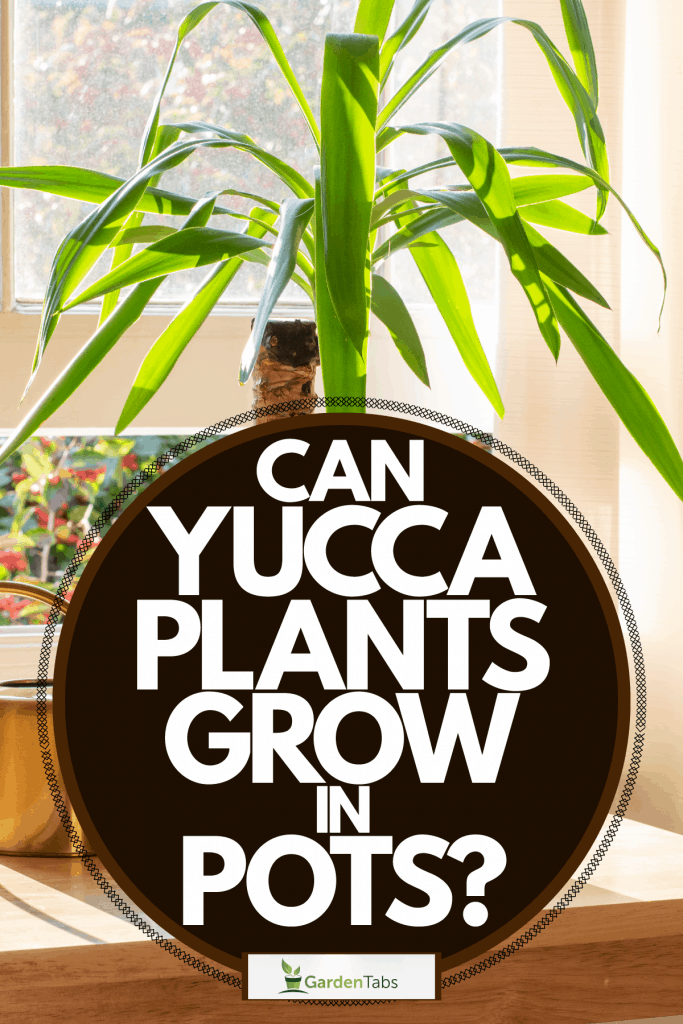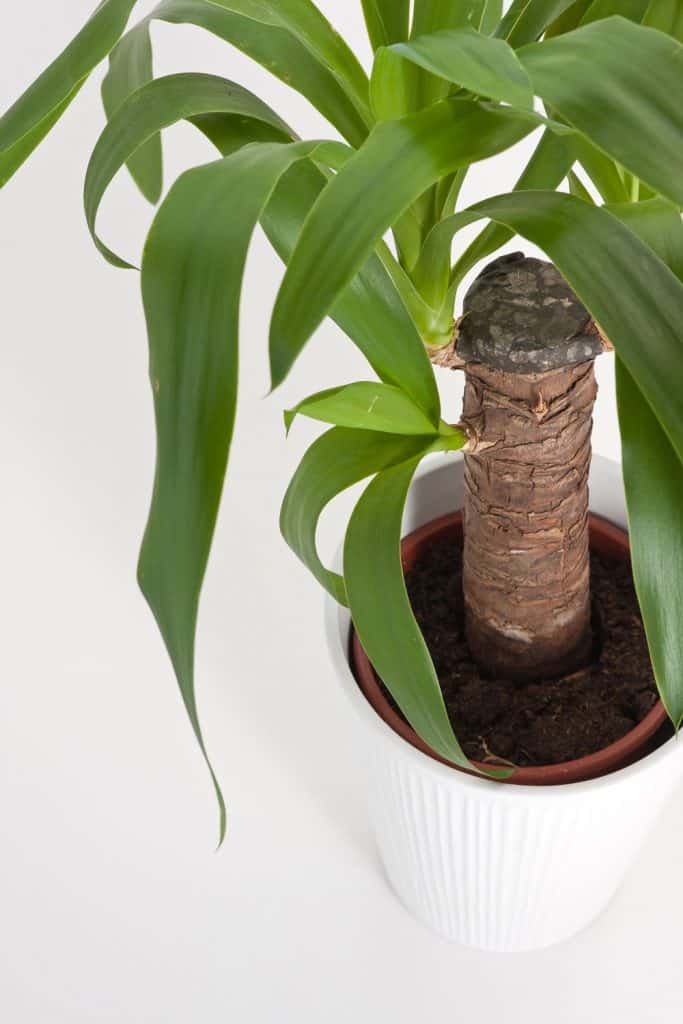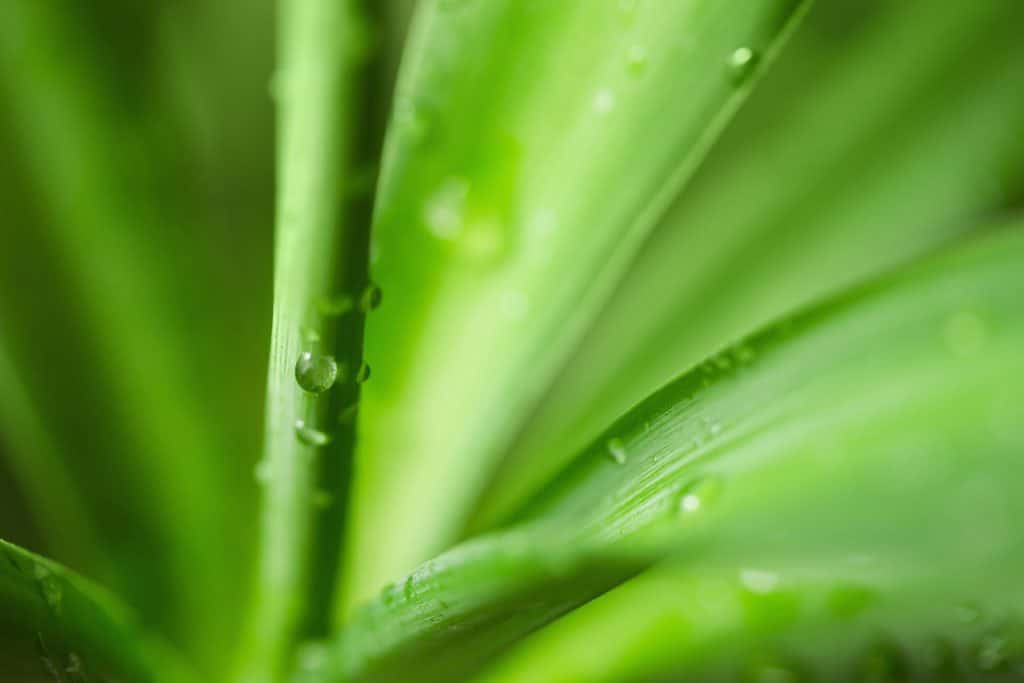Yucca plants are known for their sword-shaped leaves and large creamy white flowers. They're also known for their ability to grow without much maintenance. But can you grow a yucca plant in a pot? We've researched the best ways to grow yucca plants, and in this post, we will share the answer to this with you.
Yes, you can grow yucca plant in a pot. Many yucca plants are grown indoors and in large pots. Depending on the variety of the plant, the yucca can grow quite tall in the pot, even up to 6 to 8 feet.
The growing requirements for yucca plants are pretty similar to that of palms and cacti. The most important factors to consider when it comes to growing them are the amount of water they received and the amount of sunlight they're supposed to daily. Continue reading to learn about what other considerations should be taken when growing you can plant in pots.

Growing Yuccas in Pots
While growing yucca plants in pots is pretty similar to growing them outdoors. The biggest thing to note is that the pot used for the plant needs to be large enough to fit its roots. For the most part, yucca plants aren't kept in pots larger than about 18 inches. This helps to prevent the roots of the plant from becoming waterlogged.
And smaller plant pots aren't big enough to properly house the tall plants in their roots. An indoor yucca plant can be anywhere from 2 to 8 feet tall, so it's important that the pot is both sturdy and durable to contain the plant properly.
Check out this indoor pot on Amazon.
How Do You Care For Potted Yucca Plants?

Sunlight
Yucca plants love sunshine and will grow their best in bright and direct sunlight. In fact, they tolerate direct light more than many other succulent varieties, making them perfect to plant near sunny windows or patio doors facing the west side of a home.
These plants are known for being reasonably easygoing, and though they can tolerate low light conditions (some varieties more than others), it is best for the plant's growth to expose them to direct sunlight daily.
If not, you may find that the plant does not grow as tall and does not produce flowers during the blooming season. For optimal growth, be sure to place the plant near a sunny area for at least 4 to 5 hours a day. It's best to consider where you will put the plant ahead of time, as yuccas can get pretty weighty, and moving the plant's pot every day to accommodate sunlight requirements can become laborious.
Watering
You'll find that the yucca plant will require more watering during its growing months of spring and summer than in the colder months of the year. However, like most succulents, it doesn't need a lot of water to survive. Watering the plant once every 10 to 12 days is ideal during the warmer months of the year. During the winter months, watering the plant for about 14 to 21 days or more will suffice.
The amount of water that your plant needs will depend on a few factors, including the size of the plant, how much light it receives daily, and the temperature at which the plant is living. On average, anywhere from half a gallon to two gallons of water should suffice per watering session.
However, it is best to do a finger test to ensure that the soil is dry enough before watering the plant again. If not, you may risk the plant developing root rot from over-watering. This is the most common plant disease for yucca plants, primarily when grown by novice growers.
Check out this watering pot on Amazon.
Soil
Yuccas prefer their soil to be on the dry side, so the plant pot must have an adequate drainage hole. When watering the plant, make sure that the water entirely runs out of the drainage holes and dip the tray shortly afterward to prevent the plant roots from being exposed to standing water for several minutes at a time.
You'll be surprised at how easy it is for this plant to become waterlogged, so it's imperative to pay attention to how much water the plant receives and how well it drains. Also, you don't need to spend a lot of money buying the most expensive soil for these plants. They will do just fine in average soil, as long as it is well-draining and the other plant's needs are being met.
Learn more about this indoor plant soil on Amazon.
Temperature & Humidity
The yucca plant is native to regions in South America and the Caribbean. It's a very drought-tolerant plant and prefers temperatures ranging from 50 to 90 degrees Fahrenheit, making it perfect for indoor growing. An average temperature of 70 degrees is ideal for this plant, and fluctuations won't have that much effect on it as long as they aren't over 20 degrees at a time.
If you do take your potted plant outside, be sure to bring it back in the home before temperatures reach below 30 degrees, or it may develop frost. Frost can be very damaging to the plant and may cause it to go into a state of high stress.
Humidity
Yucca plants prefer environments with little humidity, but a relative humidity of anywhere from 30% to 50% is ideal. You don't need to monitor the moisture closely unless your home is prone to excessive humidity. If so, you can purchase a hygrometer to monitor the humidity level in your home. Even if your air is on the dry side, chances are the yucca plant will tolerate it very well.
Check out this hygrometer on Amazon.
Fertilizer
Yucca house plants don't require much fertilizer; however, monthly fertilizer can help the plant grow larger and provide it with any nutrients it may have lost during the colder months. It's best not to apply the fertilizer more than once a month unless the plant is in a state of ill-health and needs it for recovery.
Yucca plants can tolerate most fertilizers; however, slow-release and fertilizers will be best for the plants to absorb the nutrients in small doses. The ideal fertilizer NPK for yucca plants is 19-6-12. However, most other fertilizers formulator for succulent plants will typically do just fine.
Check out this succulent fertilizer on Amazon.
How Long Does A Yucca Plant Live?
On average, most yucca plant varieties will live anywhere from five years to 7 years, though they can live much longer than this.
Do Yuccas Like Sun Or Shade?
For the most part, yucca plants prefer hours of direct sunlight each day. This is important for photosynthesis and helps the plant to rejuvenate and promotes cell turnover. Ideally, about 4 to 5 hours of direct sunlight is perfect for these plants and more if possible. That being stated, these plants can tolerate filtered and partial shade throughout the day.
However, if you don't expose the plant to enough direct sunlight daily, you may notice that the plant will not grow as tall or bloom in the spring and summer months.
Should I Mist My Yucca Plant?

Yuccas, like most other succulents, thrive in dry conditions. This means that misting the leaves on the plant really isn't necessary for them to thrive. The leaves will receive any moisture that they need from the environment, whether indoors or outdoors. If you notice that your plant's leaves are beginning to look dry or turn yellow, this may signify that the plant is under-watered. And if this is the case, watering the plant in the soil will be better than simply misting the leaves.
When Should I Repot My Yucca Plant?
Yuccas are pretty slow-growing plants. On average, they'll only need to be repotted every two to three years, depending on how much they grow. However, some scenarios may cause the plant to require re-potting before this time. For example, if the plant develops root rot, you'll need to change out the pot, along with the current soil.
Also, if the yucca begins to tip over from being too top-heavy or you notice that the roots are starting to grow out of the soil, it's usually time to place to plant in a new pot. When re-potting the plant, be sure that the pot is only a few inches bigger than the previous pot, as yuccas prefer that their roots are pretty snug within the pot-which is essential for good water drainage.
Wrapping Things Up
We hope that this post has helped provide you details on how to grow yuccas in pots. When planting yuccas, the most important thing to remember is that they prefer direct sunlight daily, and they don't need much water to survive.
Before you go, be sure to check out our other posts:





